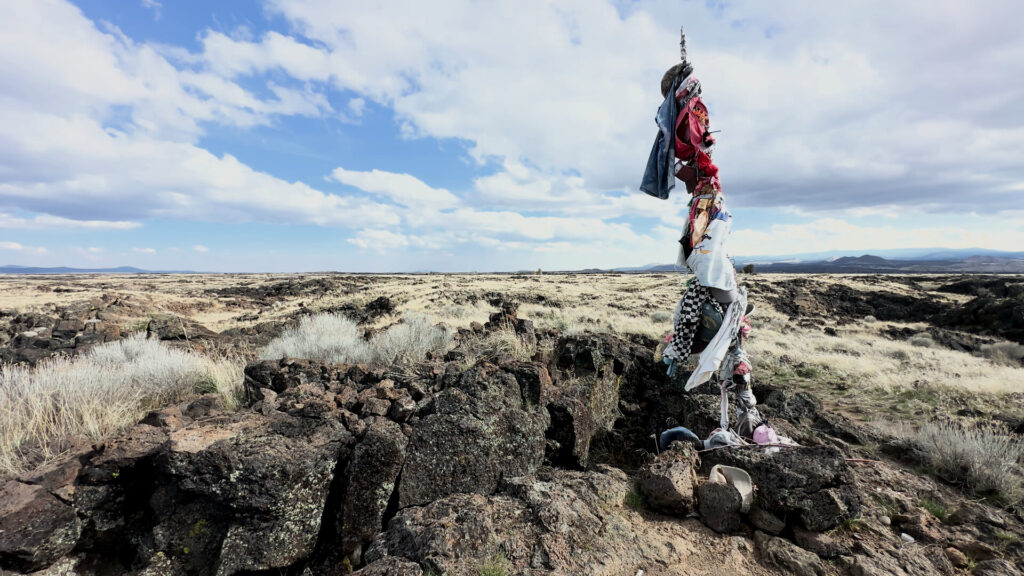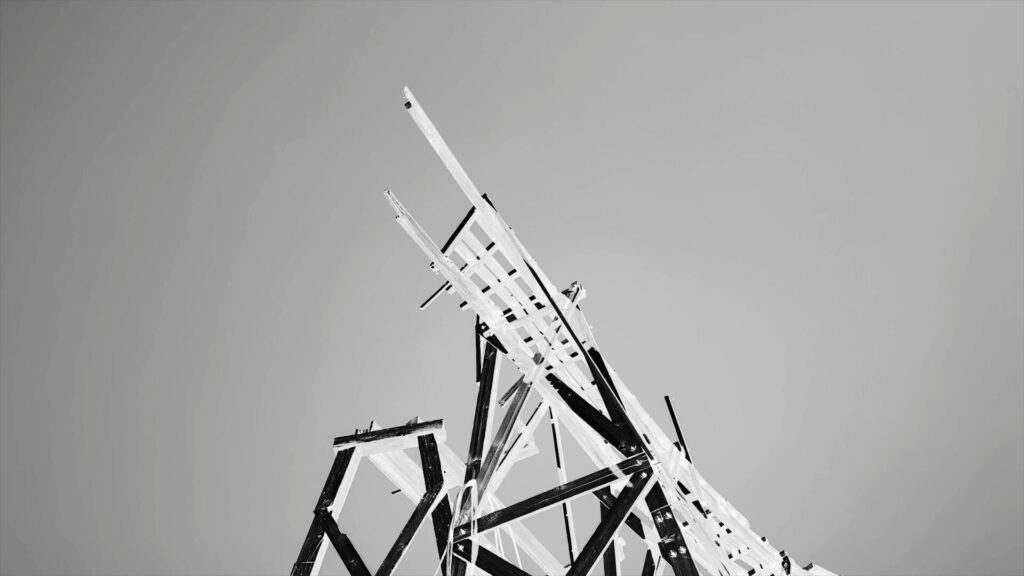Muybridge’s Modoc War photographs, commissioned by the U.S. Army, were not mere records of conflict—they were instruments of colonial vision. Framed through the lens of military conquest, these images recast the lava beds of Northern California not as Modoc homelands but as strategic battlegrounds. Their human subjects were not depicted as communities resisting forced displacement but as obstacles to expansion. Many of these photographs were meticulously staged, their illusion of documentary truth concealing the constructed nature of their violence.
The same techniques of photographic dissection—fragmenting motion, isolating bodies—that defined Muybridge’s later motion studies and laid the foundation for cinema were already at play in these images of war.
Black Glass returns to these unceded Modoc and Nüümü lands, where 57 Modoc warriors held their ground against an overwhelming U.S. force. Piron shatters Muybridge’s stereographic plates with eruptions of sound, exposing how photography—and later cinema—became instruments of surveillance, propaganda, and erasure. The war against the Modoc was waged not only in the crevices and ridges of the lava beds but within the mechanics of the camera itself, where light, time, and power converge to manufacture history.
The Gymnasium at the Barracks, a remnant of military control, overlooks Berwick’s coastal cliffs and caves. It’s an apt space for Adam Piron’s rupture of Muybridge’s images, revealing the Modoc people they sought to erase. (Peter Taylor)




